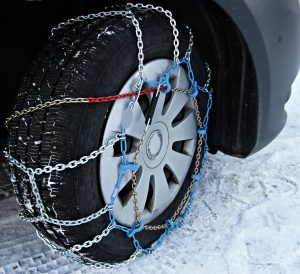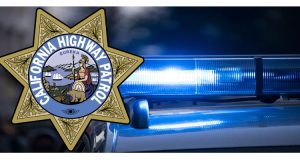MOUNTAIN COMMUNITIES–Every year I hear the same questions about chain controls in our communities. Do I have to carry chains? What do R1, R2, and R3 mean? My vehicle is four-wheel drive, do I still need chains? Keep reading for the answers to these questions and more.
During the winter months, motorists may encounter traction chain controls in the mountain areas within California. When chain controls are established, signs will be posted along the road indicating the type of requirement.
- You must stop and put on chains when highway signs indicate chains are required. You can be cited by the California Highway Patrol and fined if you don’t. You will usually have about a mile between the “Chains Required” signs and the checkpoint to install your chains.
- Control areas can change rapidly from place to place because of changing weather and road conditions.
- The speed limit when chains are required is 25 or 30 miles an hour.
- When you put on chains, wait until you can pull completely off the roadway to the right. Do not stop in a traffic lane where you will endanger yourself and block traffic.
- Chain Installers: If you use the services of a chain installer, be sure to get a receipt and jot the installer’s badge number on it. Remember, chain installers are independent business people, not Caltrans employees. Having the badge number may help with any misunderstandings later. Chain installers are NOT allowed to sell or rent chains.
- When removing chains, drive beyond the signs reading “End of Chain Control” to a pull-off area where you can safely remove them.
There are Three Levels of Chain Requirements in California:
- Requirement 1 (R-1): Chains are required on all vehicles except passenger vehicles and light-duty trucks under 6,000 pounds gross weight and equipped with snow tires on at least two drive wheels. Chains must be carried by vehicles using snow tires. All vehicles towing trailers must have chains on one drive axle. Trailers with brakes must have chains on at least one axle.
- Requirement 2 (R2): Chains or traction devices are required on all vehicles except four-wheel/all-wheel drive vehicles with snow-tread tires on all four wheels.
NOTE: (Four-wheel/all-wheel drive vehicles must carry traction devices in chain control areas.) - Requirement 3 (R3): Chains or traction devices are required on all vehicles, with no exceptions.
R-1 and R-2 are the most common conditions. A highway will often be closed before an R-3 condition is imposed. Some local areas may use variations of these designations. You must follow the directions on the signs posted for chain controls or any instructions given by Caltrans or CHP personnel at chain control checkpoints, even if these are at variance with broadcast road condition reports or information contained herein.
If you are in a rental car, know that some rental car companies do not allow chains or traction devices to be used on their vehicles. Check before you go.
Also, be aware that some vehicle types do not recommend using chains or traction devices on them at all. Check your owner’s manual for details.
 If you’re not familiar with using chains or traction devices there are two main types: Cables and Chains. They both have their own pros and cons. I’ve lived in the foothills and mountains for over 30 years and used both types. If you’ve never used either one, I’d recommend cables. They are easier to put on and deal with, in my opinion. I also recommend practicing at home in your flat driveway a few times BEFORE you find yourself in the middle of a snowstorm, kids crying in the back seat, on the side of the road trying to learn how to put on chains.
If you’re not familiar with using chains or traction devices there are two main types: Cables and Chains. They both have their own pros and cons. I’ve lived in the foothills and mountains for over 30 years and used both types. If you’ve never used either one, I’d recommend cables. They are easier to put on and deal with, in my opinion. I also recommend practicing at home in your flat driveway a few times BEFORE you find yourself in the middle of a snowstorm, kids crying in the back seat, on the side of the road trying to learn how to put on chains.
For more winter driving tips and how to keep your family safe this winter, check out our “Are You Ready For Winter” article.
*Snow-tread Tires: The California Vehicle Code, Section 558 defines a snow-tread tire as follows, “A ‘Snow-tread tire’ is a tire which has a relatively deep and aggressive tread pattern compared with a conventional passenger tread pattern”. Snow-tread tires can be identified by examining the sidewall of the tire where the letters MS, M/S, and M+S, or the words MUD AND SNOW have been stamped into the sidewall.
*Tire Traction Devices: The California Vehicle Code, Section 605 defines tire traction devices as follows: “Tire Traction Devices are devices or mechanisms having a composition and design capable of improving vehicle traction, braking and cornering ability upon snow or ice-covered surfaces. Tire traction devices shall be constructed and assembled to provide sufficient structural integrity and to prevent accidental detachment from vehicles. Tire traction devices shall, at the time of manufacture or final assembly, bear a permanent impression indicating the name, initials, or trademark of the assembling company or primary manufacturer, and the country in which the devices were manufactured or assembled in final form.”





